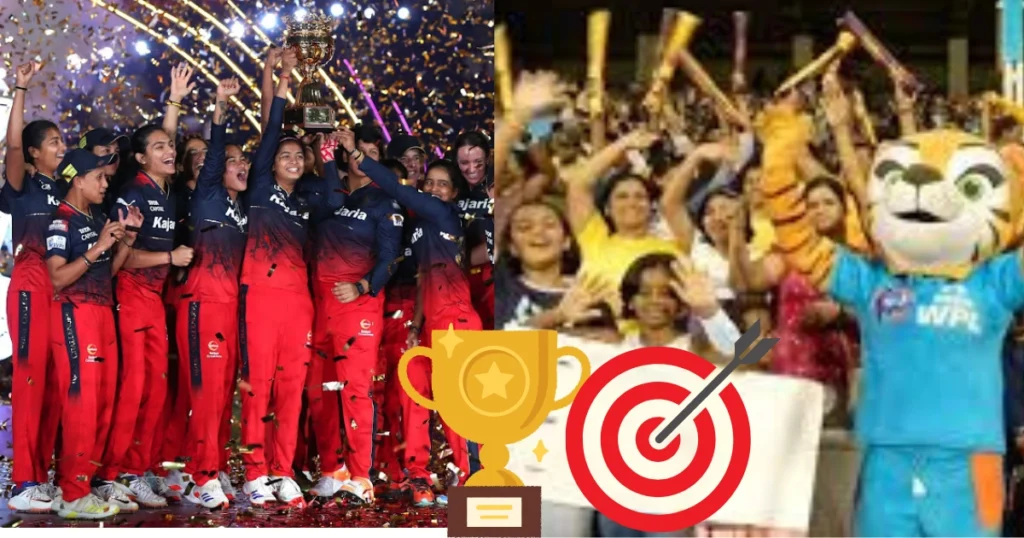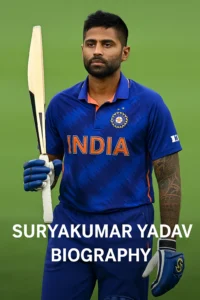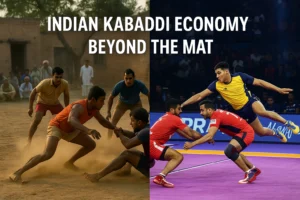Why the WPL Could Power an Inspiring Shift in Women’s Sports in India

The Women’s Premier League is more than a tournament—it’s a cultural shift, drawing massive crowds, inspiring young girls, and reshaping India’s sports narrative.
On a balmy evening in March 2023, as fireworks lit up the DY Patil Stadium in Navi Mumbai, history was quietly being made. The inaugural season of the WPL women’s cricket India tournament didn’t just mark the birth of a new league—it signaled a cultural shift. For a nation that has long obsessed over men’s cricket, the Women’s Premier League arrived like a long-overdue reckoning, both sporting and societal.
Is this finally the moment when Indian women’s sports break free from the shadows?
Table of Contents
From Sidelined to Spotlight: The Rise of WPL
Until recently, Indian women cricketers occupied a curious space—respected, but largely ignored. Even Mithali Raj, arguably the face of Indian women’s cricket for two decades, never enjoyed the fame—or fortune—of her male counterparts. But with the launch of the WPL, a franchise-style T20 tournament modeled on the blockbuster IPL, that imbalance is being addressed with both money and media might.
The numbers are telling. Viacom18 shelled out ₹951 crore for WPL’s media rights—a staggering commitment that instantly validated the league’s commercial viability. Add to that the record-breaking ₹3.4 crore deal for Smriti Mandhana, and the WPL suddenly looked less like a symbolic gesture and more like a bold business bet.
More importantly, the WPL women’s cricket India story is not just about television rights or player auctions. It’s about visibility. Prime-time slots, multi-language commentary, social media virality—these are the tools the men’s game used to grow. Now, they’re being handed to women. And the results are starting to show.
The Global Playbook: Lessons from the WNBA and The Hundred
The WPL’s success story isn’t unfolding in a vacuum. Around the world, leagues like the WNBA in the U.S. and The Hundred in England have shown that women’s sports can be commercially successful—if marketed and managed with intent.
The WNBA, for instance, recently secured a $75 million capital raise—the largest in its history. Meanwhile, The Hundred’s women’s matches in 2022 drew more than 271,000 fans, with the final sold out. These numbers weren’t achieved by accident. They were the result of investment, professional infrastructure, and, crucially, storytelling.
India has taken note. The WPL borrows liberally from these models: franchise ownership, high-profile broadcasting, and star-building. But India adds its own flair—a cricket-crazy populace, a rapidly growing economy, and a deep reservoir of untapped talent.
Beyond Cricket: Why WPL Could Be a Cultural Catalyst
When a 10-year-old girl in Ranchi watches Shafali Verma dispatch a 140 km/h bouncer over mid-wicket, she’s not just witnessing athleticism. She’s seeing possibility.
This, perhaps, is where the WPL’s potential truly lies—not merely in what it does for cricket, but in what it could do for women’s sports in India at large. Sports like hockey, kabaddi, wrestling, and badminton have long lacked sustained investment in their women’s divisions. But if the WPL proves that women’s sports can attract viewers, sponsors, and corporate interest, then the floodgates could open for others.
Take Pro Kabaddi, which has flirted with launching a women’s edition but hesitated. Or ISL, which still lacks a women’s counterpart. The WPL could be the proof of concept they need.
Economic Empowerment Through the WPL
It’s not just fame—it’s fortune. For many Indian female cricketers, the WPL is the first time they’re earning life-changing money. And with money comes freedom: to train better, recover smarter, and play longer.
Consider this: prior to the WPL, India’s centrally contracted women cricketers earned between ₹10 lakh and ₹50 lakh annually. One season of WPL, with contracts ranging from ₹10 lakh to ₹3.4 crore, can match or exceed those figures. This kind of earning potential also changes family dynamics. Parents, traditionally hesitant to let daughters pursue sport professionally, may finally see it as a viable career.
For comparison, the Women’s Big Bash League (WBBL) in Australia, while respected, still doesn’t match WPL salaries. That gives India an unexpected first-mover advantage in making women’s cricket a financially attractive profession.
You may also read https://newslyy.com/2025/06/14/suryakumar-yadav-ipl-records-and-t20-achievements/
The Media’s Role: Visibility Equals Validity
No revolution happens quietly. Media coverage of the WPL has been loud, consistent, and, for once, enthusiastic. From highlight reels on Instagram to primetime discussions on Star Sports, the WPL women’s cricket India phenomenon has entered the mainstream.
This media blitz doesn’t just attract viewers; it builds legitimacy. It’s easier to pitch sponsorships when the audience is proven. It’s easier to develop fan bases when faces like Jemimah Rodrigues or Harmanpreet Kaur are featured in ads, interviews, and reels.
As The Hindu reported, the opening WPL match drew 10 million viewers. That’s not niche—it’s national.
Challenges Ahead: Infrastructure and Pipeline
The excitement is real, but it’s not enough. India still lacks a robust grassroots pipeline for women’s cricket. Coaching academies remain male-dominated, and access to quality infrastructure in Tier 2 and Tier 3 cities is uneven at best.
Unless the WPL translates into better state-level opportunities, improved scouting, and structured pathways for under-19 talent, its impact could plateau. Moreover, while star players are thriving, the bench strength remains fragile. The risk of overburdening the same core group of players is very real.
A Sporting Renaissance in the Making?
So, is the WPL a flash in the pan—or the start of a renaissance?
If early indicators are anything to go by, the latter feels more likely. The economic logic is sound. The viewership is there. The cultural shift is palpable. What remains is consistency—of seasons, of investment, of belief.
As India inches toward becoming a $5 trillion economy, its women deserve an equally ambitious sports ecosystem. The WPL might just be the catalyst that forces every sporting body in the country to reimagine its priorities.
Because when young girls across India dream of being not just the next Mithali Raj—but the next Mandhana, bought for crores and cheered by millions—that’s when you know a revolution is underway.The rise of WPL women’s cricket India is more than a moment—it’s a movement. For decades, women’s sports were sidelined, but WPL women’s cricket India is shifting that narrative. With strong media coverage, big sponsors, and passionate fans, WPL women’s cricket India is finally getting the spotlight it deserves. The league not only empowers young girls to dream big but also positions WPL women’s cricket India as a serious contender in global sports. This isn’t just evolution—it’s a revolution in the making.
External DoFollow Links ;
- Official wpl site https://www.wplt20.com/






3 thoughts on “Why the WPL Could Power an Inspiring Shift in Women’s Sports in India”